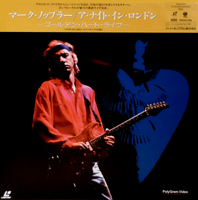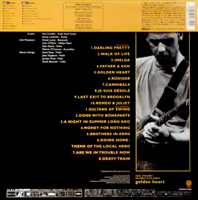- Darling pretty
- Walk of life
- Imelda
- Father and son
- Golden heart
- Rüdiger
- Cannibals
- Je suis désolé
- Last exit to Brooklyn
- Romeo and Juliet
- Sultans of swing
- Done with Bonaparte
- A night on summer long ago
- Money for nothing
- Brothers in arms
- Going home
- Are we in trouble now
- Gravy train
including Obi


Concert registration of the first show before the Golden heart tour. Remarkable to see that this official LaserDisc contains the tracks Sultans of swing and Money for nothing while these two tracks are missing on the official DVD that was released in 2003, except for the early Mexican DVD edition and the rare Korean Video-CD. Rare to see that a LaserDisc is more complete than a DVD. 12 inch LaserDisc, NTSC format, Japanese edition including seperate info-sheet and up-located Obi.